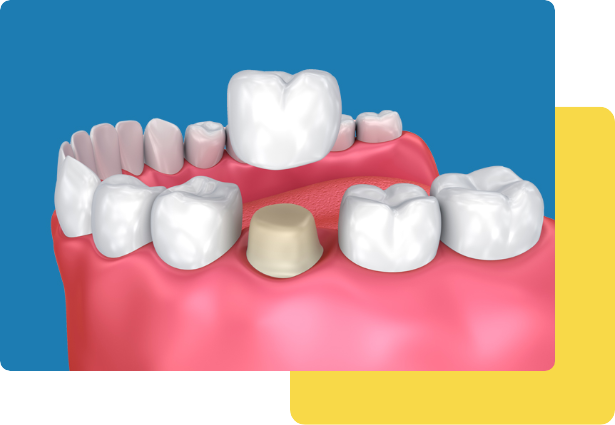

Children’s Dental Care – Gaithersburg, Maryland
Restorative Dentistry
Dr. James Tong has been helping children smile for over 30 years.


iTero® Digital
Impressions (no goop)
The iTero® digital imaging system allows our practice to generate an accurate 3D image of your jaw, mouth, and teeth, which is essential for cosmetic procedures including dental implants and Invisalign® orthodontics.
Crowns
A crown (often called a cap) covers the tooth and restores it to its original shape and size. Decay is removed and cleaned from the tooth and a preformed crown is placed over the tooth. Unlike adult crowns, in which the crown is made to fit the tooth, which requires two appointments, baby crowns are placed in one visit, because the tooth is prepared to fit the crown.


Pulpotomy
(Baby Root Canal)
The Problem:
Decay that has reached the nerve/pulp of the baby tooth.
The Solution:
Like adult root canals, the dentist will access the nerve chamber of the tooth, and remove some of the nerve/pulp of the tooth. Unlike adult root canals, this is a very short procedure, as only part of the pulp needs to be removed, and does not require the time-consuming filing of adult root canals.
Advantages:
If the tooth has been symptomatic this procedure will likely alleviate the pain. This allows for the tooth to be preserved until it is ready to fall out naturally.
Disadvantages:
Pulpotomies have a 90% success rate. Occasionally, the nerve of the tooth is so badly damaged that it does not respond to pulp therapy, resulting in the need for extraction of the offending tooth. Certain circumstances increase the likelihood of failure with pulpotomies, your dentist will discuss your child’s situation with you during diagnosis.
Alternatives:
The only alternative to a pulpotomy is extraction, and placement of a space maintainer. However, if it is possible to save the baby’s tooth, this is the best alternative because it preserves the appropriate spacing for the adult dentition.




Root Canal Process
Root canal therapy is needed when the nerve of a tooth is affected by decay or infection. In order to save the tooth, the pulp (the living tissue inside the tooth), nerves, bacteria, and any decay are removed and the resulting space is filled with special, medicated, dental materials, which restore the tooth to its full function.
Having a root canal done on a tooth is the treatment of choice to save a tooth that otherwise would die and have to be removed. Many patients believe that removing a tooth that has problems is the solution, but what is not realized is that extracting (pulling) a tooth will ultimately be more costly and cause significant problems for adjacent teeth.
Root canal treatment is highly successful and usually lasts a lifetime, although, on occasion, a tooth will have to be retreated due to new infections.
Signs & Symptoms for possible root canal therapy:
An abscess (or pimple) on the gums.
Sensitivity to hot and cold.
Severe toothache pain.
Sometimes no symptoms are present.
Swelling and/or tenderness.
Dental Emergency
There’s little that’s as painful as a tooth or jaw ache, so call us any time to schedule an emergency appointment. Our doctors and team love our patients and want what’s best for you, so call us today for an emergency appointment!
Hours
Mon
Tue
Wed
Thu
Fri
Sat
Sun
8:00 am – 3:00 pm
Closed
8:00 am – 3:00 pm
Closed
8:00 am – 2:00 pm
Closed
Closed
Social
MEDICAID ONLY OFFICE
Copyright © 2022 All Rights
Reserved by Children’s Dental Care | Privacy Policy



